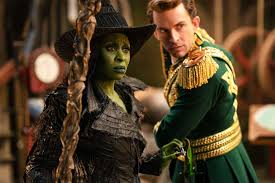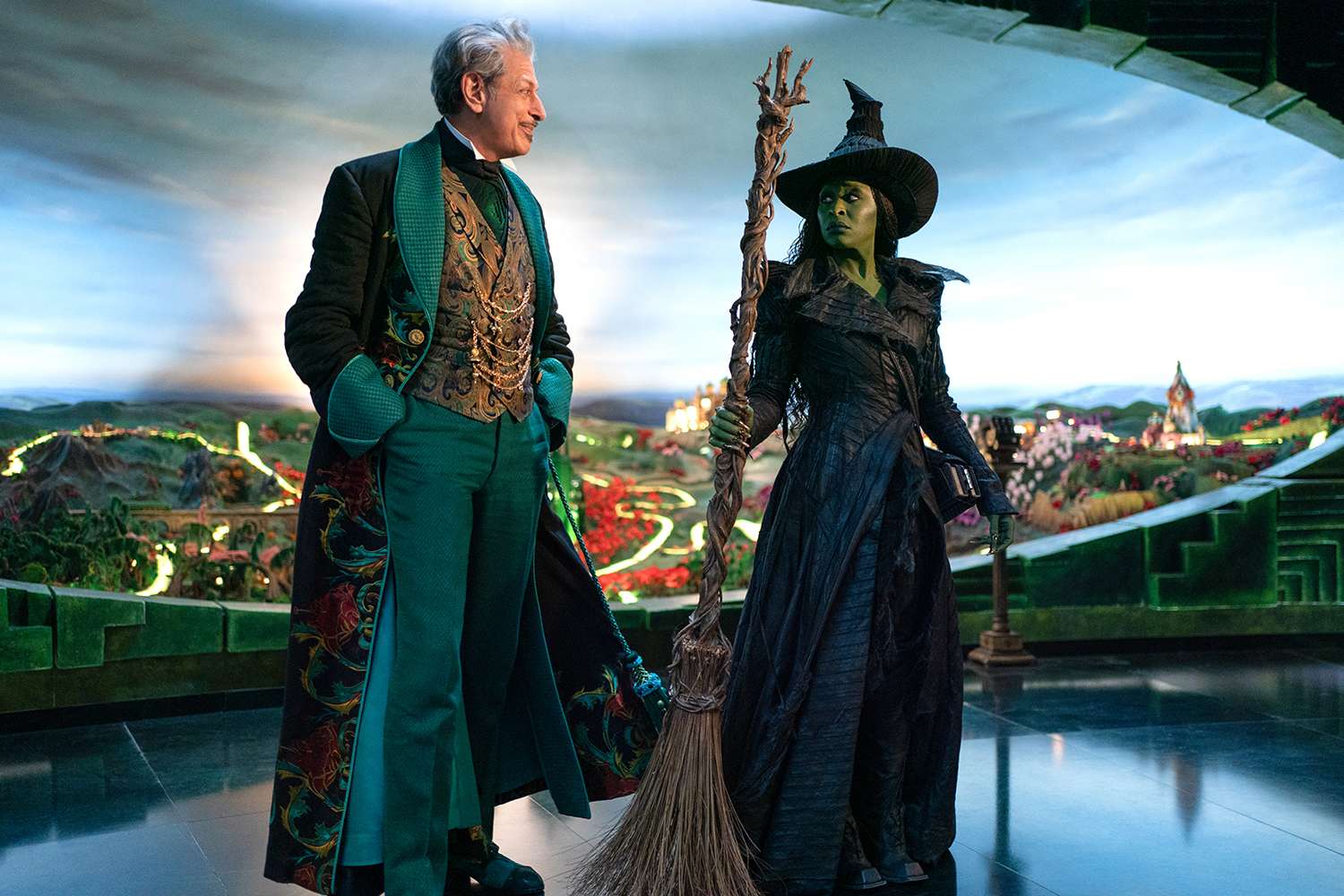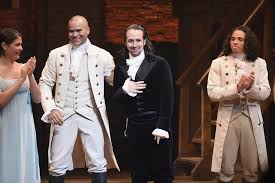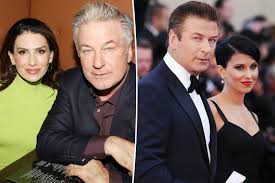The release of Wicked: For Good, the long-awaited second half of Jon M. Chu’s cinematic adaptation of the Broadway phenomenon, arrived with plenty of expectations. Fans prepared themselves for emotional devastation, certain that the closing chapters of Elphaba and Glinda’s story would leave them teary-eyed, nostalgic, and perhaps even a bit broken. And yes, tears inevitably followed. But what many viewers didn’t anticipate was that Chu would send them out of the theater wearing wide smiles thanks to a final image that functions as both a love letter to the stage musical and a deeply sincere tribute to the friendship at the heart of Wicked.
The movie follows many of the beats of the long-running Broadway show, but Chu brings his own sensibility to the screen, making space for quieter, more emotionally textured moments. Nowhere is that clearer than in the film’s closing sequence. After Elphaba, played with simmering intensity by Cynthia Erivo, fakes her own death by using a trapdoor beneath the infamous “melting,” she escapes Oz alongside the now-transformed Fiyero, embodied by Jonathan Bailey. The two walk into the fading sunset, free from the political machinations of Oz and the narratives that others wrote for them. It’s an ending steeped in liberation, yet tinged with the bittersweet acknowledgment that Elphaba must leave behind the person who once meant the most to her.
Before she disappears into the desert, Elphaba shares a final musical exchange with Glinda—Ariana Grande’s shimmering, crystalline take on the role adding both brightness and sorrow to their farewell. Across a wide, windswept distance, the two reprise “For Good,” the emotional centerpiece that has long served as the musical embodiment of their bond. Glinda now stands as the keeper of the Grimmerie, Elphaba’s ancient spellbook, trusted to guard its power and the truth of her friend. What follows is the kind of moment only cinema can provide: a seamless shift into memory.
The film dissolves into a flashback set in their student days at Shiz University, back before politics, magic, and destiny tangled their relationship into knots. The flashback shows the two young women seated in a vast poppy field, sunlight filtering through the blooms. Elphaba wears her pointed black hat, a look that later becomes notorious, while Glinda drapes a soft, white-knit shawl around her shoulders. It’s an image bursting with youthful optimism and the beginnings of a friendship that would alter the course of both their lives. Then, with a gesture that sends jolts of recognition through longtime fans, Glinda leans in close and whispers into Elphaba’s ear.
This final image is more than sentimental nostalgia. It lovingly recreates the iconic logo of the Broadway musical—the essential silhouette of Glinda leaning in toward Elphaba, lips near the Witch’s ear, sharing some unknown secret. That whisper has hovered over the “Wicked” fandom for more than two decades. It has no explicit context in the stage show; audiences never discover what Glinda says. But the image is so tied to the culture of Wicked that Chu knew early on he wanted it to be part of his cinematic vision.
Cynthia Erivo herself had no idea the shot would serve as the film’s emotional and visual final note. “I had no idea,” she admitted in an interview. She recalled a day on set spent filming a series of gentle, playful moments in the field—scenes full of camaraderie among the Shiz classmates. Director Jon M. Chu had mentioned he planned to use it, but offered no specifics. When she finally saw the finished film, Erivo described her reaction as a burst of shock and delight. She realized instantly the power of the placement and how perfectly it capped off Elphaba and Glinda’s shared journey.
Chu, for his part, has always been drawn to the whisper image. Long before cameras rolled, during the earliest stages of the movie’s development, he recognized that the silhouette from the show’s marketing—so simple, so enigmatic—carried emotional weight far beyond a poster. “That’s the most iconic thing of ‘Wicked,’” Chu has said. Even without narrative context, the whisper sparks curiosity. It hints at a bond that transcends plot, a shared understanding between two women whose lives are defined by how they change one another. To Chu, that mystery wasn’t just marketing genius; it was an opportunity to create a final image that held equal parts intimacy, mythology, and tribute.
He experimented with placing the whisper scene at different points in the film, but each attempt felt self-conscious, too aware of the legacy it was trying to honor. He wanted the moment to emerge organically, not as a wink to the audience. It wasn’t until screenwriter Winnie Holzman—returning to expand her own work from the Broadway production—suggested a montage sequence that the whisper found its proper home. Holzman envisioned a pastoral interlude of the friends and their Shiz classmates frolicking through a hillside, plucking poppies, joking, and enjoying an idyllic afternoon before fate begins tugging them in separate directions. It was in this montage, nestled among images of shared laughter and blooming friendships, that the whisper fit naturally.
Holzman loved the idea of allowing viewers to glimpse Elphaba and Glinda before life layered them with responsibility and heartache. In earlier drafts of the script, composer Stephen Schwartz even wrote a new song intended for the entire group to sing during the outing, underscoring their carefree camaraderie. Although that number was ultimately removed, the spirit of the scene remained. Much of the footage Holzman and Chu created didn’t appear in Wicked Part One, released the previous year, and for a time it was unclear where it would land.
Because the sprawling two-part production required filming both installments back-to-back, the cast and crew often shot sequences that wouldn’t be edited or contextualized until much later. Chu remembers capturing the whisper during one of those golden-hour shoots, the sun dipping low behind the hills as he worked with Grande and Erivo. The moment wasn’t planned in the script for that specific day. Instead, it arose from intuition. Seeing the two actresses relaxing in character among the poppies, Chu asked Grande to lean in and whisper something—whatever felt natural—into Erivo’s ear. He didn’t know yet where the shot would ultimately be placed. It simply felt, in his words, “like a natural way that you would hang out with a friend.” Later, during the editing process, he realized just how powerful that single spontaneous gesture could be when positioned at the end of the saga.
By placing the whisper after the emotional high of “For Good,” Chu connects the characters’ past with their present and future. The flashback underscores that despite everything—political upheaval, personal sacrifice, the weight of legends—their story began with something gentle and familiar: two girls sitting in a field, sharing secrets. The image reframes the epic tale into something intimate. And for long-time theater fans, the recognition of the musical’s logo reimagined in living motion becomes a tender bridge between stage and screen.

What makes the moment even more stirring is its ambiguity. Just like on Broadway, the film never reveals what Glinda whispers. That decision preserves one of the central themes of the story: the personal, unspoken threads woven through deep friendships. Elphaba and Glinda’s connection is defined not by certainty but by transformation. They help each other grow, challenge each other’s beliefs, and ultimately part ways not because love has faded but because destiny demands it. The whisper embodies all the things that don’t need to be spoken aloud to be understood—apologies, gratitude, promises, and memories. The secrets friends keep for one another are sometimes more meaningful than the ones they share.
The decision to mirror the iconic logo does more than honor the Broadway production; it reaffirms what has made Wicked endure across generations. For all its spectacle, Wicked has always been anchored in an emotional core that transcends genre. It is a show about power and politics, yes, but more importantly, it is a story about friendship—a relationship between two young women navigating a world determined to define them before they can define themselves. By ending the film not on the grandeur of Oz or the danger of its rulers, but on the quiet intimacy of friendship, Chu reminds audiences what has kept the story alive for more than twenty years.
It’s also a cinematic choice rooted deeply in character. Throughout the movie, Elphaba’s journey involves reclaiming her voice, her agency, and her narrative from forces that misrepresent her at every turn. Glinda, in contrast, must grapple with the distance between who she is and who she is expected to be. Their dynamic is a dance of opposites: one blunt, the other polished; one skeptical, the other eager to please. The whisper, presented without dialogue, allows viewers to project their own understanding of the characters onto the moment. It’s not about the literal words, but about the memory of who they were before the world demanded they become something else.
In interviews, Chu has spoken about the importance of honoring the emotional roots of the stage production without feeling bound to replicate it beat for beat. The whisper at the end is a perfect illustration of that philosophy. It’s not a direct adaptation of something that happens in the musical, but rather an expansion of its themes and imagery. It invites fans of the original show to feel seen while also offering newcomers a symbolic gesture that resonates even without prior knowledge.
This approach aligns with the broader tone of Wicked: For Good, which balances reverence for the source material with a cinematic language all its own. The film is a visual feast—lavish costumes, sweeping landscapes, and carefully orchestrated magic—but its most memorable moments are often its quietest. Chu seems keenly aware that what audiences cherish about Wicked isn’t simply the spectacle but the emotional truth beneath it. And so he places this fragile, human moment at the story’s conclusion, trusting its simplicity to leave a lasting impression.
For the actors involved, the final image carries its own layer of meaning. Erivo, who steps into a role defined by decades of performances before her, sees the whisper as a reminder of Elphaba’s humanity. Even at the height of her power and the depth of her struggles, Elphaba was once just a young woman learning how to open herself to friendship. Grande, too, infuses the scene with a soft tenderness that feels uniquely hers. Their chemistry—playful, honest, and grounded—makes the moment feel less like an homage and more like a genuine piece of their characters’ shared history.
The fact that the cast didn’t initially know how the scene would be used adds another layer of magic. Filmmaking is often a process of trust: actors give pieces of themselves to moments that may or may not find a place in the final cut. When those moments land with such clarity and purpose, the surprise becomes part of their beauty. It’s as if the film itself whispered its intentions only when it was ready.
As audiences continue to discover the conclusion of Chu’s two-part vision, conversations about the whisper have already begun echoing through fan communities. Just like the Broadway logo inspired years of speculation, the film’s final shot invites viewers to imagine their own interpretations. Perhaps Glinda whispers a promise to preserve Elphaba’s legacy. Maybe she offers forgiveness, or thanks, or a reminder that Elphaba has always mattered. The beauty of the choice is that it remains forever suspended between possibility and emotion.

In the end, Wicked: For Good closes not with spectacle but with a whisper—a quiet, shimmering note that lingers long after the credits roll. It is a testament to a friendship that reshaped two lives, a bridge between the stage and the screen, and a tribute to the countless fans who have kept the story alive for decades. With this final gesture, Chu doesn’t just end a film; he completes a circle, honoring the world of Wicked by returning to the intimate, unbreakable bond that began it all.










